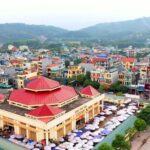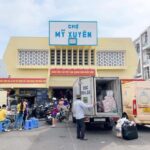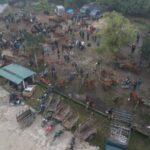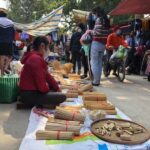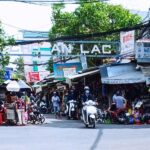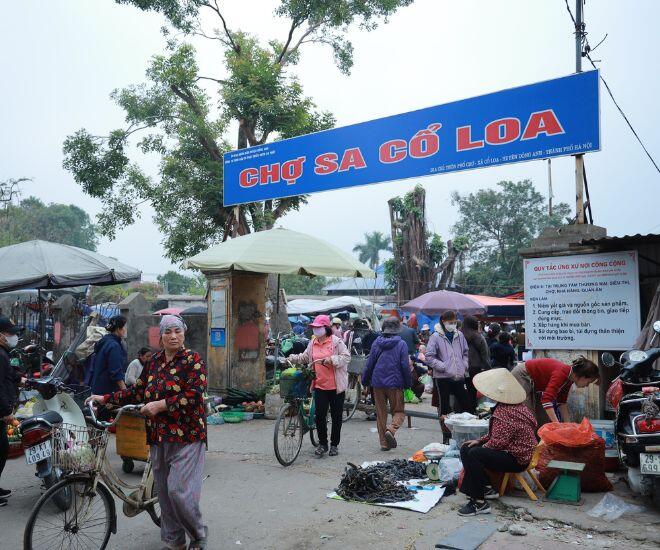
Cho Sa, as it is affectionately known by locals, is an administratively independent unit belonging to Co Loa commune, Dong Anh district, Hanoi. Although it is a newly established administrative entity, the name “Cho Sa” has been etched in the minds of generations of locals. Legend has it that the name originates from it being the site of King An Duong Vuong’s capital sand table, and the market is located on the sandy bank of the Thiep River (Hoang Giang), on the left bank, south of the outer citadel of the ancient Co Loa.
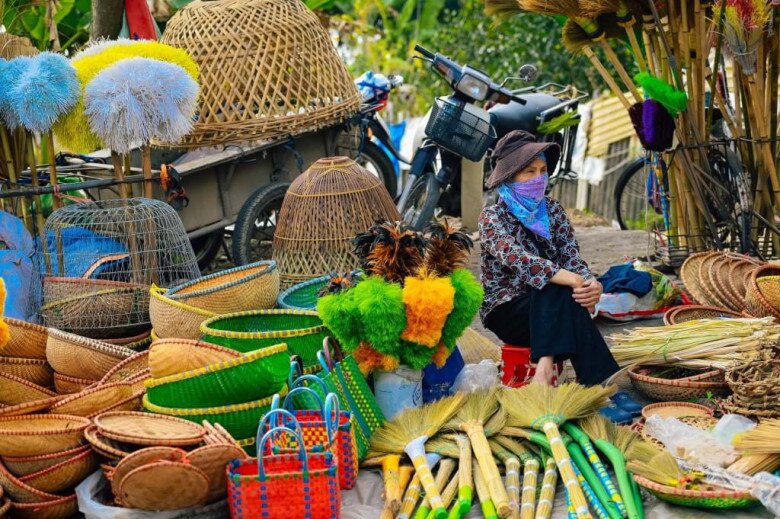
Unlike ordinary markets that are open daily, Cho Sa market is only held six times a month, on the 1st, 6th, 11th, 16th, 21st, and 26th of the lunar calendar. This market schedule hearkens back to ancient trade customs, where markets were not just places for commerce but also cultural and social gathering points for the entire region. The proximity of the regional markets is captured in the following folk verse:
“Cho Dau is to Cho To
Cho To is to Cho Doc
Cho Doc is to Cho Sa
Cho Sa is to Cho Coi
Cho Coi is to Cho Dai”
This folk verse not only helps remember the market schedule but also showcases the interconnection and mutual support between these regional markets, forming a vibrant and bustling trade network since ancient times.
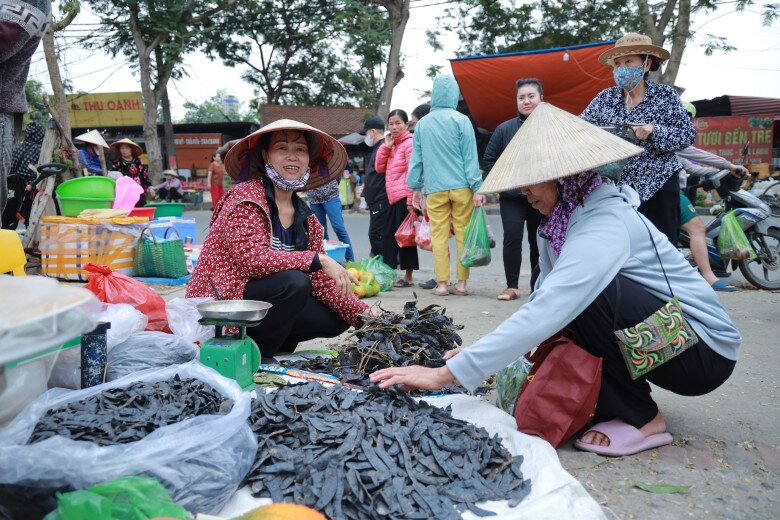
Cho Sa market is held on a spacious ground next to Ngoi Bridge, in Co Loa commune. Despite its outskirts location, very close to the city, Cho Sa retains the essence of a traditional rural market. What makes Cho Sa unique is not just its schedule but also its distinctive produce. In addition to essential goods for daily life sourced from elsewhere, Cho Sa is a gathering place for local specialties produced by the locals themselves, imbued with the local flavor. These could be fresh vegetables just picked from the garden, healthy livestock for the upcoming season, or handcrafted items made by the very hands of the local farmers.
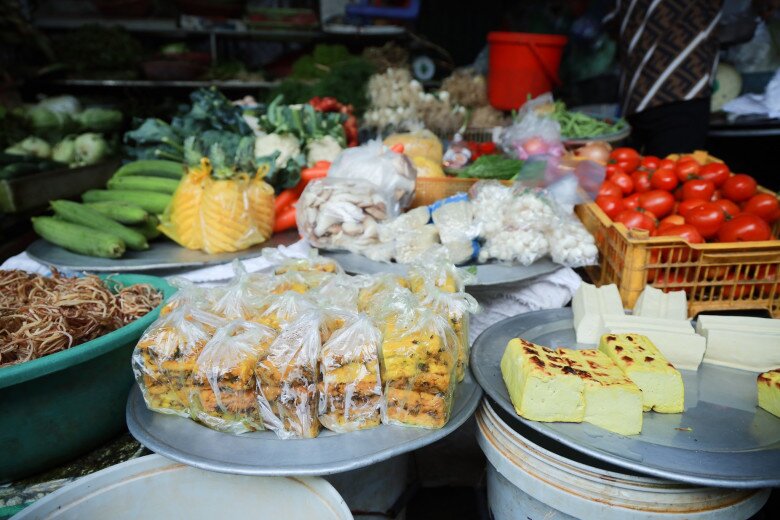
The way the market operates is also very natural and rustic. It is a spontaneous market, without designated stalls or fixed counters. Vendors simply set up their displays by looking at each other. There are spacious stalls with a wide variety of goods, but there are also small corners where a single or a couple of trays are enough to display a few homegrown vegetables for sale. This simplicity and freedom create a very unique and familiar market atmosphere.
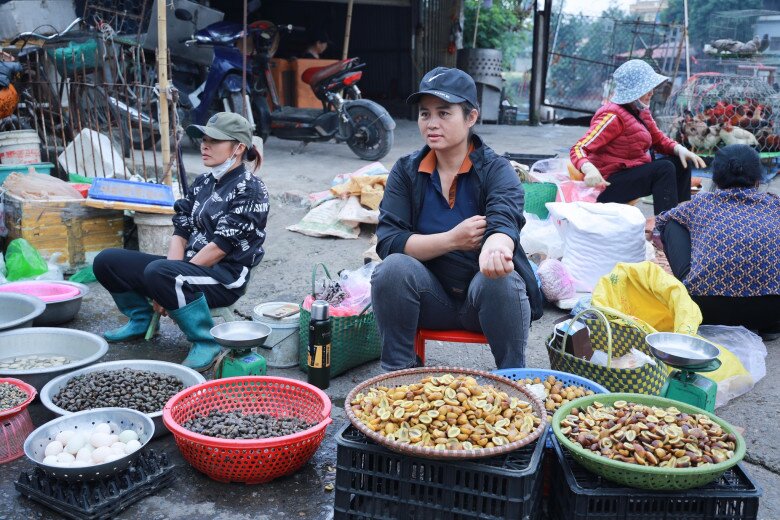
As an outlying market, agricultural tools are an indispensable commodity at Cho Sa. Stalls selling farming equipment are always bustling with customers and are a familiar destination for locals when they need to purchase or repair agricultural production tools. This shows that Co Loa, despite its proximity to the city, remains an affluent agricultural land with large rice-growing areas, and most people are deeply attached to farming and animal husbandry. Hence, rows of stalls selling livestock for agricultural breeding are always present in each market session, meeting the production needs of the locals.
A unique cultural feature that has become a custom and a distinctive part of the Co Loa people’s culture when visiting Cho Sa is the “snack-eating tradition.” The market has snack stalls that have existed for decades, witnessing the growth of generations. Rustic snacks such as sugar-coated fried cakes, sticky rice crackers, popcorn, steamed rice cakes, and sticky rice cakes are not just food but also evoke childhood memories. Accompanying their mothers to the market and being treated to these snacks are fond memories for many children. Thus, from generation to generation, eating snacks at the market has become a habit and an integral part of rural market culture, contributing to the beauty of Cho Sa.
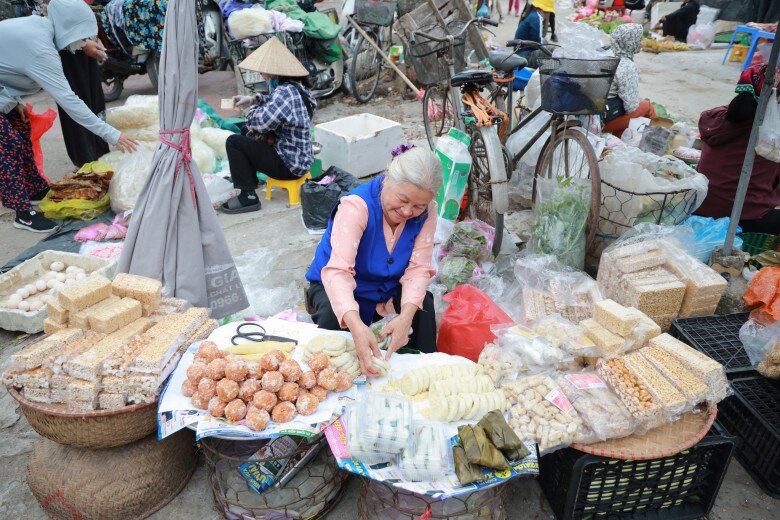
While no one can confirm that Cho Sa dates back to the time of An Duong Vuong in the 3rd century BC, it is indeed an ancient market where stalls have been passed down from mother to child and from grandmother to grandchild. Cho Sa is just one of thousands of Vietnamese fairs, but with its five-day cycle, it is a beautiful aspect of community cultural life that has been preserved for thousands of years in the outskirts of Hanoi.
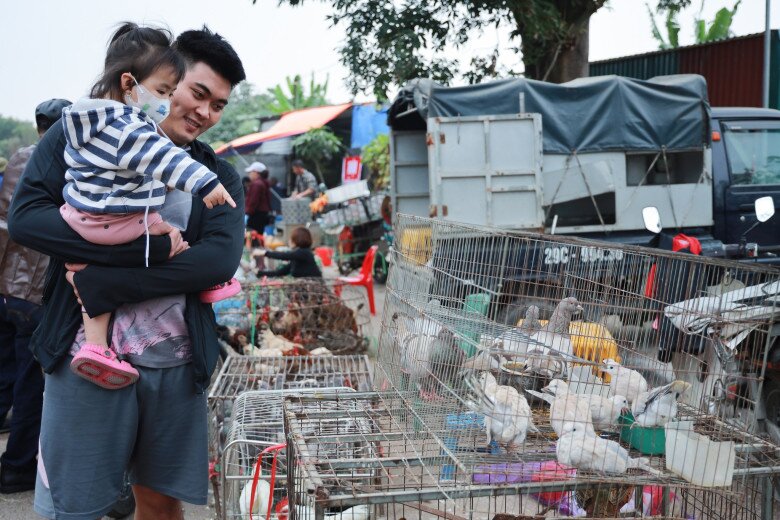
In the bustling crowd, the sounds of price inquiries, haggling, and vendors’ invitations blend to create a lively market atmosphere full of life. It can be said that the ancient land of Co Loa, since being chosen as the capital, has become a populous settlement. Economic activities were boosted, and some crafts, especially bronze casting, reached the pinnacle of ancient casting techniques. Co Loa stood out as an important ancient city, and although the “market” element was not yet clear, it was reflected in a representative market system with Cho Sa at its center. Gradually, the “market” element developed, forming the entire Cho Sa market area as it is today, contributing to the development and preservation of the cultural identity of this ancient capital land.
The Bustling Heart of Soc Trang: A Local’s Food Paradise
Nestled in the heart of a small riverside town, My Xuyen Market is more than just a morning trading hub for Soc Trang locals. It is the cultural epicenter of the region, brimming with vibrant energy. The market buzzes with lively hawker cries, tantalizing aromas of authentic Western delicacies, and humble stalls exuding rustic charm and heartfelt hospitality. Together, these elements weave an unforgettable experience for all who wander through its lively corridors.
The Heart of Hanoi: A Glimpse into the Past at this Rustic Market
The Nu’a Market is a periodic gathering held in Phu Binh, a commune in the Thach That district of Hanoi. It is one of the few rural markets that have preserved the ancient cultural traditions and customs, with stalls offering a unique array of produce and goods characteristic of the rustic countryside.

























